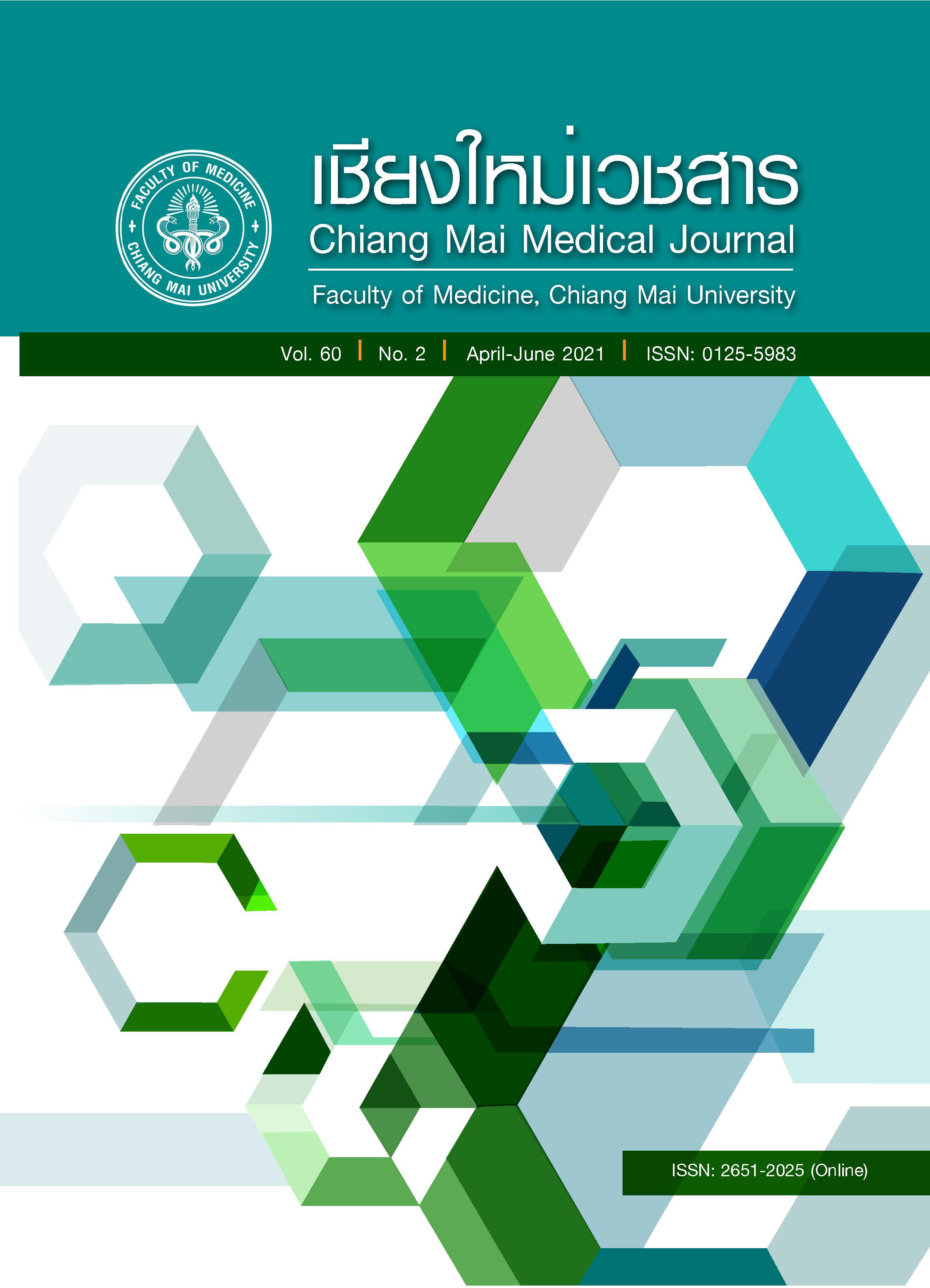Study of a nursing service model for patients with Non-ST Segment elevated acute coronary syndrome at Lampang Hospital
Keywords:
Non-ST segment elevation acute coronary syndromes (NSTE-ACS), clinical governance, specialist nursing serviceAbstract
Objectives This study aimed to examine the outcome of a nursing service model for patients with Non-ST segment elevated acute coronary syndrome (NSTE-ACS) at Lampang Hospital.
Methods This research and development study, conducted between July 2019 and March 2020, was based on the concept of clinical governance. The subjects included 133 registered nurses and 275 NSTE-ACS patients. The study was divided into four phases: 1) situational analysis, 2) development of a nursing service model, 3) implementation of the model and 4) evaluation of the model. Data were collected using focus groups, questionnaires and patients records. Descriptive statistics and paired t-test were used in the analysis.
Results Patient outcome categories consisted of time to emergency assessment (TEA), time to electrocardiogram (TEKG), receipt of timely emergency intervention (TEI), length of stay (LOS) and mortality rate. The average TEA and TEKG (in minutes) after implementation of the nursing service model decreased from 15.04 ± 11.12 to 9.26 ± 7.55 minutes and 17.84 ± 15.96 to 13.76 ± 9.46 minutes, respectively. Of the NSTE-ACS patients, 64.57% received TEI. LOS decreased from 6.32 ± 8.29 to 5.69 ± 4.30 days. The mortality rate was 5.71% compared to 9.80%, 13.78% and 9.48% in the three respective years preceding the study. Knowledge and skills of registered nurses increased significantly following implementation of the model (p < 0.001).
Conclusion The specialist nursing services model for NSTE-ACS patients based on clinical governance was effective in improving the quality of care as well as nurses’ competencies.
References
The Heart Association of Thailand under the Royal Patronage of H.M. the King. Thai Acute Coronary Syndromes Guidelines 2020. Samutprakan: Nextstep Design Limited Partnership; 2020.
Srimahachota S, Kanjanavanit R, Boonyaratavej S, Boonsom W, Veerakul G, Tresukosol D. Demographic, management practices and in-hospital outcomes of Thai acute coronary syndrome registry (TACSR): the difference from the western world. J Med Assoc Thai. 2007;90:1-10.
Leedumrong W. Incidence and risk factors associated on patients with abnormal treadmill exercise stress test at Pranangklao Hospital. Region 4-5 Med J. 2016;35:46-55.
Lampang Hospital databased. www.lph.go.th (Intranet) 5. NHS Centre for Reviews and Dissemination. Management of menorrhagia. York: University of York; 1995.
Hawkins P, Shohet R. Supervision in the helping professions. Milton Keynes: Open University Press; 2010.
Tilokskulchai F. Evidence-based nursing: principle and method. 6th ed. Bangkok: Faculty of Nursing, Mahidol University, 2010. (in Thai)
Thaiudom A, Lumnok N. Development and evaluation of evidence-based nursing protocol for patients with moderate to severe traumatic brain injury. J Royal Thai Army Nurses. 2018;19:107-16. (in Thai)
Office of the Public Sector Development Commission. Good governance rating. Bangkok: Premier Pro; 2009.
Nanakorn S, Prachusilpa G. The development of good governance scale for nursing organization. J Royal Thai Army Nurses. 2014;15: 225-31. (in Thai)
Kasorn J. The development of capabilities to be a specialty nurse in acute coronary syndrome patients at Damnoensaduak Hospital. Journal of Nursing and Health Care. 2015;32: 139-51.
Sawasde R, Moolsart S. The development of the clinical supervision model of head nurse at general hospital in Regional Health 2. Buddhachinaraj Med J. 2019;36:197-210.
Downloads
Published
How to Cite
Issue
Section
License

This work is licensed under a Creative Commons Attribution-NonCommercial-NoDerivatives 4.0 International License.










